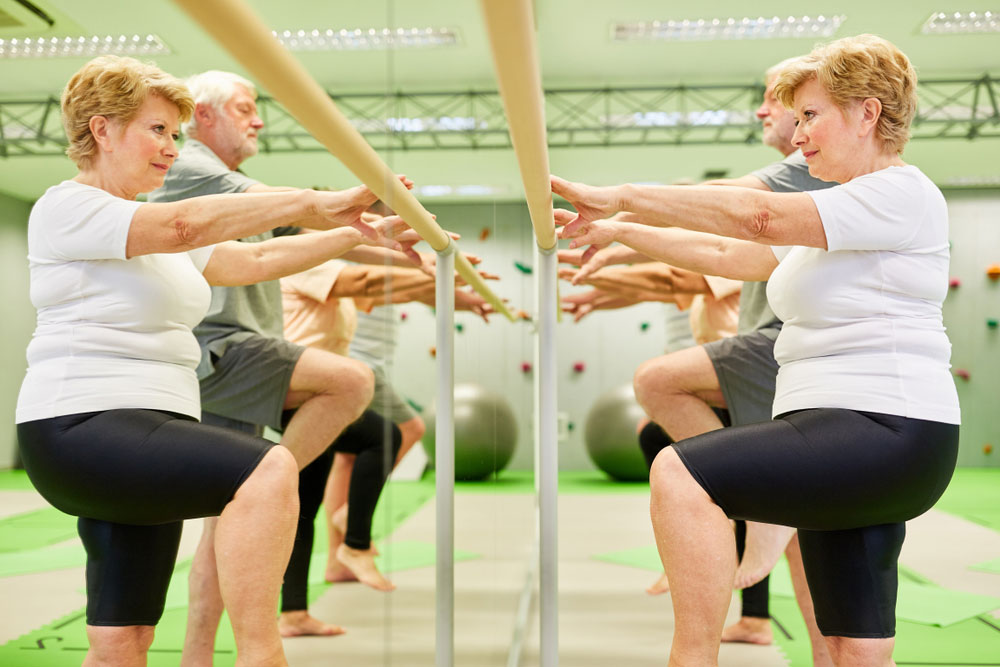Everything we do in our daily lives involves balance. The better our sense of balance, the better we perform.
Balance can best be defined as physical equilibrium or the ability to remain upright whether you are standing still or in motion; stability is your body’s ability to adjust to a disturbance by creating an opposing force equal to the disturbance, restoring you to your original position. Underlying both balance and stability is proprioception, or the body’s ability to process information about its position at any given time. (The Great Balance and Stability Handbook)
Nature endows us with both strength and balance when we are young, and we probably don’t give a thought until the day we start to lose those capacities. Strength and balance may come naturally, but they have to be used consistently to be maintained AND must be challenged in order to be improved. As we age we tend to lose neuromuscular strength and balance mostly due to inactivity. This diminished awareness, combined with the loss of bone density caused by less muscle use, unfortunately leads to falls, fractures and a loss of confidence. In general, a lower quality of active life.
Many people don’t realize that balance can be improved by simply retraining the brain with a simple routine of balance exercises. The types of exercise that are most beneficial are those that focus on progressive training for strength (force) and power (force plus speed.) Progressive means that your routine should become increasingly more challenging, because you won’t make any gains if you stay at the same level.
Give yourself a balance challenge and keep those reflexes sharp!
Susan Covey is the Acts Bayleigh Chase Fitness Program Manager


Write a Letter to the Editor on this Article
We encourage readers to offer their point of view on this article by submitting the following form. Editing is sometimes necessary and is done at the discretion of the editorial staff.